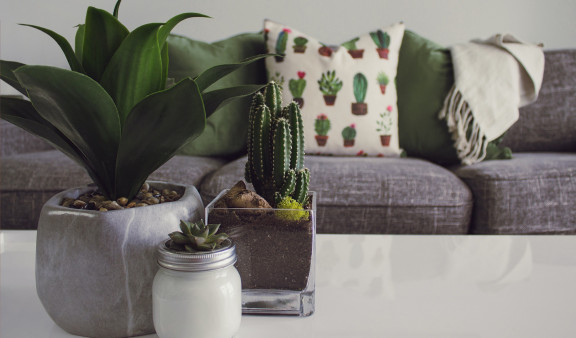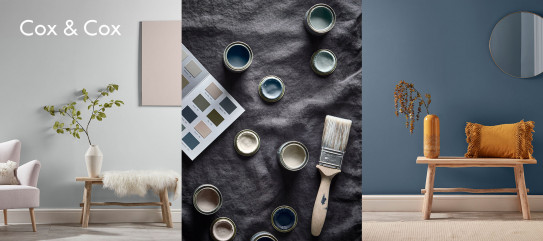
What digital brands can do to make the most of the home and garden boom
Do you remember when garden furniture consisted of just four chunky plastic chairs, a small round plastic table and a flimsy parasol
Fast forward 10 years and the garden has become an extension of the home, with bars, barbecue areas, dining and lounge spaces, hanging lights and accessories, filling our outdoor spaces.
Even so, who could have predicted the Great Garden Furniture Rush of 2020 and 2021?
Not to be confused with the Great Oil Rush and Great Gold Rush of bygone years, the Great Garden Furniture Rush saw a digital stampede of prospectors, with many online brands selling out of its summer furniture in winter – with waiting times on sets of up to four months.
And it’s not just garden furniture. Homeware sales went – excuse the pun – through the roof, too.
Home and garden spending saw online sales increases of 71 per cent in 2020 and 120 per cent in Q1 of 2021, according to the IMRG Capgemini Online Retail Index, the primary performance indicator for the UK’s online retail market.
The good news for merchants is this boom shows no sign of stopping any time soon – with whole new demographics of digital savvy customers now shopping for homeware and garden furniture and accessories online.
Here, Redbox explores this rise and looks at what merchants should focus on to keep up with growing demand and changing expectations.

Behind the boom: consider the changing demographics
Why has online home and garden sales risen so rapidly during the past few years? While they were already heading in the right direction, the industry was certainly one of the winners of the pandemic – especially for the brands that had their digital processes in order.
Consumers, fuelled by a mix of staring at the same four walls and garden space, money savings and preparing for life after lockdown, helped notch up record figures.
Demographics also changed. Remember all the hard work you did a few years ago to understand who your customer was? Throw it out of the window and start again! Times are changing and brands must adjust more quickly to make the most of it.
Fuelled by Instagram and influencers, more young people are decking out their homes with nice furniture, while the older generations have been forced into becoming more online savvy.
Speaking exclusively to Redbox, Aynsley Peet, Director of Ecommerce at digital homeware store Cox & Cox, said: “People have been spending more time at home; they have more disposable income not having to pay travel costs to and from work or for expensive holidays. Instead, they are spending more on their gardens, creating home offices or changing their spaces to make them work better.
“Last year was a record year for us. Sales were up 70 per cent and traffic up 100 per cent year-on-year. Outdoor furniture went crazy this year, up 200 per cent during some periods. It was snowing in January and we were still selling outdoor furniture! It was beyond our wildest dreams to be selling these numbers in January and we were out of stock on lots of lines by March, although we have re-stocked for the summer.
“We have seen big demographic swings, with more younger customers browsing and buying. There has been a 500 per cent uplift in the 18-25 age group, with many spending money buying new furniture and soft furnishings, painting the walls and designing the garden. We had more than 100,000 extra followers in the last year on Instagram alone, which has been instrumental in driving a younger demographic to our site.
“We’ve also seen more older customers too. They’ve got used to buying online now and like the ease of having furniture delivered directly to their homes. Brands must diversify to cater for different age groups.”
Time to deliver a better customer experience
While many homeware retailers with bricks and mortar stores have now opened their doors again, many online habits are expected to remain.
Consumers have choice at their fingertips and will quickly move on to another brand at the click of a button if they aren’t getting the experience they expect. Customers are looking at pricing, product information, ratings and reviews – a bad Trustpilot rating or a negative social media post, for example, can have a damning impact on your business.
Omnichannel may be an over-used word in digital, but with so many customer touch-points today, never has it been so important to get all areas of the customer experience right.
If a garden set is out of stock, this must be clearly shown on site – with dates of when it will be back in stock. If delivery is not going to be for three months, the customer should not be finding this out when they have got to the end of the check-out process or even purchased the product. Information and transparency is crucial to build trust.
Good customer service has never been more integral to digital businesses, with a growing number of homeware brands such as Next now using chatbots to filter out common questions and provide quick answers. Many consumers want answers to their questions on social feeds too, so ensure you have this system in place. It’s important not to leave customers waiting days to answer their queries – even if the customer service rep is ‘working from home’ or the brand has a reduced customer service.
How about returns? If a customer changes their mind, how easy is it for them to return the item? What about cancellations before delivery? Do you make this easy and pay the money back quickly?
Do you have the right payment solutions in place to cover all new demographics? Redbox’s partner Klarna, gives customers the option of ‘buying now and paying later’, with the homeware brand getting the money up front. Cox & Cox recently added this solution to its own platform.
Aynsley said: “Getting the customer experience right is essential. From customer service and a frictionless user experience to user journey and making the checkout as easy as possible, all customer touch points need to be examined carefully, with issues ironed out quickly.”

Product imagery and content
Not too long ago, a homeware brand could get away with a photo and short description of each product online.
Today, product imagery and product information are arguably the most important factors in a consumer’s buying decision and will often stand between a buyer starting a conversation with you rather than your competitor. First impressions really count.
Imagery must provide as many angles of the product as possible and consider showcasing it in a furnished room for context. Gift items to top influencers who will often display the products in their own home so customers can get another perspective.
Many retailers like Ikea are also dabbling with Augmented Reality, which allows customers to position and visualise a piece of furniture in their own home before ordering it.
With product information, retailers must provide as much detail as possible, from descriptions and dimensions to aftercare and delivery waiting times.
Some brands – even pure-online retailers – are experimenting with print catalogue to complement their digital catalogue. What was once considered ‘old hat’ has made a stunning return, with consumers surprisingly enthusiastic about receiving them. No longer are they a rambling collection of product pages, instead brands are focusing on designing stunning imagery and creative presentations to evoke emotion and drive customers online or to the store.
Aynsley said: “Product imagery and content is vitally important. Provide as much information as possible and include reviews of the items onsite if you can, to give confidence in your brand.

Cox & Cox product catalogue
“We have our own photo studio. It’s helped us take advantage of uplifts in interest and the quick turnaround of imagery is really important. We do a lot of shoots and lifestyle imagery and plan to use AR and 3D models in the future.
“A few years ago, we were sending out eight print catalogues a year, now we are sending out 10.
“Print catalogues are a real differentiator for us – they stand apart from the increasingly cluttered digital inboxes and social media feeds and can linger in the home long after emails are deleted.
“They really help to showcase our brands and products through beautiful imagery and importantly, we see traffic spikes when they are sent out.”
To summarise
Online homeware and garden brands are experiencing huge spikes in traffic and conversions. The Great Garden Rush of 2020 and 2021, shows no signs of slowing down.
Brands must pay close attention to the changing demographics and adjust their approach accordingly. Having the right content and imagery is more important than ever; ensuring the customer experience is seamless - now non-negotiable.
The pandemic highlighted how brands must be ready to pivot strategy quickly – but more importantly, how crucial it is to ensure the correct digital framework is in place to deal with spikes in growth or periods of upheaval.
If your company faces further restrictions in the future, do your digital solutions support moving large amounts of stock from stores to warehouses? Does your platform, content management system and order management match your expected digital growth? If not, it’s time to consider moving to a platform such as Adobe Commerce that can provide the tools, support and solutions that can.
But, upgrading or moving platform is no easy task. Brands worry about losing key team players to work alongside a digital partner on the implementation for months on end.
It’s why so many brands are now opting for Redbox Ignite, an accelerated approach to getting your ecommerce up-and-running, with an average development time of around 12 to 16 weeks.
Over the past year alone, Redbox has completed implementations for a wide range of globally-recognised brands, including British luxury department store, Fortnum & Mason; Diesel in the UAE; high-end furniture store, OKA; and iconic British toy store, Hamleys.
Want to find out more about how we can help support your growth?